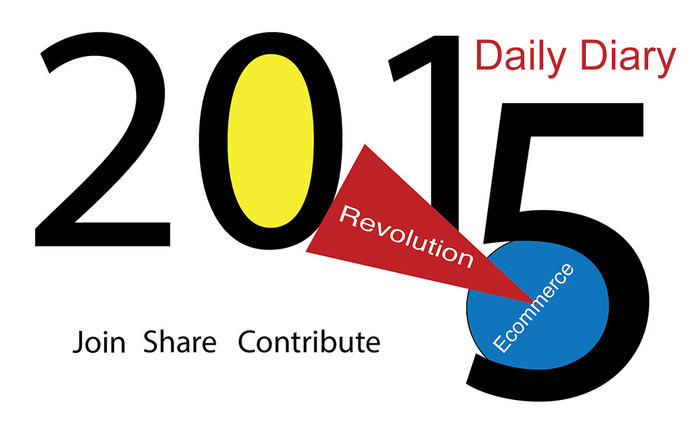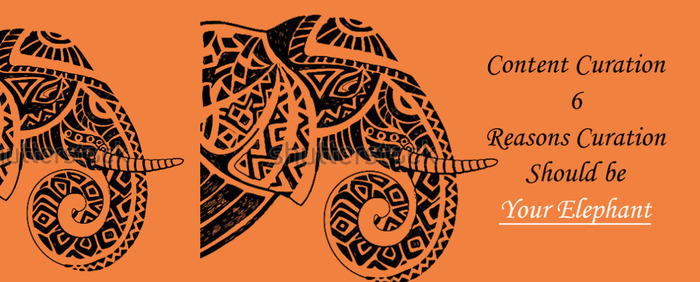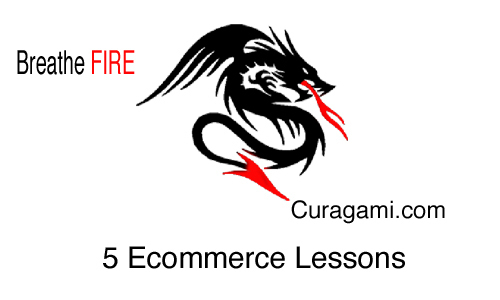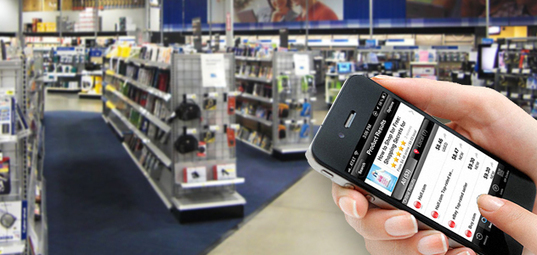Code School Problems This Curagami post shares five problems we experienced at The Iron Yard coding school in Durham, North Carolina. The post places code schools in the context of problems we would have had hiring a graduate when we ran an e-commerce web design shop. Problems such as:
- They teach “academic” not business coding
- No Student Vetting or Skills-Based Placement
- Value/Benefits Proposition is Off
- Can't Keep Great Teachers
- More Than Ten Year Discrepancy Is Almost Impossible to Overcome
In our class of more than twenty students, we doubt more than five are working in a web design shop today. So more than $100,000 was spent, tuition then was $10K for twelve weeks of class, with little return, chance to change the student's career or provide value $1.50 in late fees from the library or other online classes couldn't provide.
Read our warnings about code schools before you buy their promises: http://www.curagami.com/code-schools-will-they-change-your-life/
Martin (Marty) Smith:
Our Curagami post summarizing problems we experienced during our tenure at The Iron Yard in Durham, North Carolina. Hopefully, you read our code school problems piece before paying for the broken promises most will receive.
Hacking Happens - 5 Security Measures shares the death, taxes & websites get hacked as life's new certainties or maybe not if you do these 5 steps today.
Simple E-commerce Stories - How To Tell Them shares storytelling secrets such as how details create trust & why a little romance in About copy is good.
5 TIps To Cross Ecom's Rubicon
Smart merchants are beginning to cross the ecommerce rubicon between content and commerce. Discover 5 Tips to cross your online store's ecommerce rubicon.
5 TIps
* “Magazine” your content
* Curate from brands
* Curate from customers
* Lean & Visual Win
* Tie In Email, Social & Mobile
Going to incorporate @Guillaume Decugis and Scoop.it's ideas on Lean Content on this not very lean post too. I set aside some content to keep the post pinging with fresh content.
Evergreen means our team will refresh the content (or ask for help from our Ambassadors to do so) regularly. Not all content is equal. Places in our "evergreen" regularly scheduled updates category must be earned (lol).
So help 5 Tips to Cross the Ecom Rubicon earn evergreen status, or better yet contribute your thoughts and we will curate in.
Crossing the Rubicon between content and commerce is the BIG ISSUE in online retailing today. Discover our tips to cross and add yorus.

Ecommerce Is A Mobile & Social Game
The more I do this, web marketing, the more game-like everything feels. Mobile and social are acting like huge pythons squeezing content into a game. Content shock is the other trend impacting your content marketing.
In 2003 your content could be factual and visually boring and it would work. Not so much anymore. Today you must think of your content like pieces on a chess board. How can you achieve your goals by developing relationships between your content, your customers and advocates?
Mobile and social make ecommerce a game too as WaNeLo.com demonstrates. WaNeLo.com is a "clean slate" built to mashup massive amounts of content that already exists, make creating "YOUR WaNeLo.com Store" fun (you swipe through content) and collect a nice fee for being the first retailer to get the many changes to online commerce brought to you by a smart phone near you (and most of the time people are within 10' of their smart phones at all times).
We began the conversation about how to make an online store a game a few weeks ago on G+ (https://plus.google.com/+MartinWSmith/posts/RdjAjWoJTHw ).
This @HaikuDeck shares how to make content more game-like. Here are a few easy ways merchants can begin to create gamification:
* Create an Ambassadors Program to identify your 1% Contributors and 9% Supporters.
* Provide a public profile for Ambassadors (if they choose) with a good URL (cool.com/ambassadors/marty for example).
* Curate great Ambassador content first to OTHER Ambassadors and next, and this should be a smaller set, to the public via your site. * Begin to track key Ambassador functionality such as social shares, links and likes.
* Create feedback loops for Ambassador actions (200 Likes, 100 links and 3,000 social shares to date or yesterday or last week). * Steal LinkedIn's famous, "Your profile is 80% complete" Call-To-Action (CTA).
Might seem strange to talk about adding gamification to ecommerce NOW when the holiday tsunami is only days away, but most ecommerce teams have their plans made up. While social media means any plan must respond to what is happening now, most ecommerce teams are working a quarter ahead.
Successful gamification isn't easy, but rewards are huge. Instead of invading Russia in the winter we suggest merchants begin building foundation by creating an Ambassador Program. Ambassadors, those fans, friends and supporters willing to help, become critical when you want to turn gamfication ON (and you will).
Ecommerce Revolution In 2015
Yesterday we planted a flag stating our intention to create an ecommerce revolution in 2015. Today first objections were heard. Learn why Can't is music to a marketing geeks ears and how you can join the ecommerce revolution so you can say, "Yeah, I helped with that," when others say they wish they could have been there.
Join The Ecom Revolution Today
http://bit.ly/ecom_revolution_google
Content Curation is the "new marketing" & this post shares 6 reasons curating content should be your online marketing's elephant.
Finding the need to curate content acute as we develop HackHeadphones on Shopify. Why create new content when everything we need can be curated from sources such branded websites (using videos from Shure.com), Amazon and other "portal" sites.
We are making sure to give credit where it is due and someone might throw a flag, but bet we can negotiate mutually beneficial terms since using content with attribution is closest thing we have to advertising these days.
Your website sucks.I’m sorry that I have to be the bearer of bad news, but someone had to tell you the truth.Your website is a crime against humanity, an atrocious abomination, a target for Godwin’s
Martin (Marty) Smith:
Great list from a trusted source, Jeff Sauer. My favorite reasons Jeff notes why a website sucks include:
#2. IT teams seek efficiency, marketing teams want traffic. Those two goals don't always play nice together.
#5. Designers are another dangerous group to a website's ability to convert visitors into buyers. Designers are important partners, but have firm ideas about preferences for conversion over pretty pictures and recognize the difference.
#6. You get what you pay for and no free or $10 site is going to sing, perform magic or help your mission critical online marketing much. Don't invade Russia in the winter (i.e. outspend your ROI), but don't think you can get anything worth anything for free either. Expertise is expensive, but you save money in the end because you spend less than having to redo the same work over and over again and make more.
#11 We've all been to websites where there is no there, there. If you don't have a passion you want to share with the world don't create a website. Remember the web is a huge lie detecting amplifier. If you have cracks the web magnifies them. If you have flaws they are not up there on the big screen. Good news is everyone does, so an honest, passionate and real share has and will always work beautifully online (just not with a $10 designer or your mom's friend, friend).
#14 Dedicated landing pages separates pros from everyone else. Those with more landing pages do exponentially better than those with fewer. That stat may not past Freakonomics muster, but the idea is sound. Create more landing pages dedicated to supporting a single PPC keyword with a solid offer and a clearly visible CTA (Call To Action).
Agree These Are Common SEO Mistakes Made By Merchants
* Dupe Titles (not unique).
* No Text On Category Splash Pages (easy one to blow). * Product Descriptions That Lack Depth.
I would add these 3:
* No keywords in title or keywords you win anyway (company name or brand).
* No keywords in image anchor text (or too many keys). * No "in-lline" divs promoting "Read More".
That last one is a "trick" that secures engagement and spider attention by writing 500 or more words and then hiding most of the text behind a "read more" link.
The content appears to the spider early and the spider skips right on by the "read more".
Fix these 6 common ecommerce SEO mistakes NOW and you make more money on black Friday.
No such thing as an "overnight success" online. Ecommerce requires listening, serving & creating great stuff people love & that takes time, money, courage.
5 Ecommerce Tips From Moon Audio:
- Passion To Be Great.
- Focus, Focus, Focus.
- Create Community.
- Listen and HELP.
- 10% Play Money.
We asked experts from different regions of the digital marketing and
eCommerce world this question:
“What can an eCommerce store do to leverage social media to generate
traffic and create new or recurring sales?
The response we received was amazing. 43 experts gave us 75 different tips
on leveraging social media to sell more, and we're sharing them all with
you.
Martin (Marty) Smith:
Social media and commerce don't have to be an oxymoron.
In this article, we’ll walk through all of the vital steps when planning a highly converting mobile e-commerce website. The most important questions you need to ask are...
Martin (Marty) Smith:
Love the "ditch digging" specifics of this post. Mobile conversion seems mystery wrapped in enigma to me, so this post is beyond helpful.

North Carolina Museum Of Art and Art of Internet Marketing
Kudos to whoever is managing the digital marketing team at the North Carolina Museum of Art (NCMA). I got a nice tweeted thank you for my Wall Street, Texans and a Thief story about the Porsche By Design exhibit (http://sco.lt/6mfIMD ).
I visited Porsche By Design yesterday as I attempt to wander my way through the CrowdFunde business plan, but that is another story. NCMA's web team included a Win A Porsche raffle (so a viral contest) and some of the most amazing pictures of cars I've ever seen. KUDOS!
The didn't include the picture above, but I wanted to take a moment and share Internet marketing image tips learned during my 7 year Director of Ecommerce tenure. The picture above makes a great HERO (largest images on webpage are called 'heroes") because:
* High contrast (white car with red car in immediate background).
* Action since the photographer is focusing and people are milling.
* People milling create interest. Note how none of the "milling people" are looking AT the camera so they don't distract since we would follow their eye sight lines if they were looking at the camera).
* The milling crowd moves out and then back into the white car because of the way the RED CAR is pointed (brilliant again).
* The car becomes a huge POINTER, so putting a CTA (Call-To-Action) under it would get lots of clicks.
* The photographer becomes a pointer too since many would click anything immediately below him. * Gaze follows the photographer’s camera and the sight lines of people in the picture (note the guy LOOKING at the photographer who is focusing on the car = BRILLIANT).
This photograph is GEINUS since it creates excitement, provides amazing pointers that would direct visitor eyes to Calls-To-Action and its basic color, high contrast would work well within any web design.
My question is are you thinking about your hero images this deeply? If not you are NUTS since serendipity is not a scalable Internet marketing strategy (lol). Quick tips for Heroes:
* Remember to look for pointers that will direct your visitors’ gaze.
* We look at PEOPLE more than things.
* We also look WHERE people are looking.
* We really LOOK at babies, but same rules apply (we look where they look).
* The direct gaze at the camera is welcoming and creates engagement. * Two people talking heads turned away is a disaster (excludes visitors).
* Don't over use the direct gaze idea.
* Crowds can work, as they do here, but be aware that visitors will follow their sight lines too.
* When people's sight lines aren't available we look for and find other directional clues.
This last bullet is the real RUB of using images on your website. THINK about how any image moves visitors to the next step. Images (and video) can help or hurt your website's goals. Follow these simple tips and images will HELP move visitors to subscribers, contributors, advocates and buyers.
Target's not alone in this relatively new attitude about the phenomenon known as showrooming. Shoppers are busy looking for the best deal and more and more are using their smartphones and tablets for showrooming.
Martin (Marty) Smith:
Why We Don't Learn Until The TRUCK Hits Us
Retailers have been funny birds about showrooming. Target removed iPads from their store as if that would solve their "showrooming: problem. Showrooming, using a physical store to test look and feel and then BUY online and not necessarily from that store, is here to stay.
Finally there is post that tells retailers what every Internet marketer already knows - when a trend is inevitable surf it don't fight it.

Content or Conversion
Ecommerce (B2C) merchants are narrowing the "content marketing" gap with their B2B cousins, but the old left/right brain problem remains. Ecommerce requires a strange synergy between right brain creativity (design, merchandising, visualization) and left-brain science (analytics, metrics, KPIs).
If you asked me the greatest challenge from my 7 year Ecommerce Director tenure it would be finding ways to win on both sides of the content - conversion Rubicon.
When we thought we had the content dial just right it would tank our conversion metrics. Each time we thought we had conversion set up perfect our "content" metrics like pages viewed, time on site and bounce rates would disintegrate.
Finding the tiny balance beam between CONTENT's heuristic benefits (more time on site, better engagement, more Lifetime Value, better quality User Generated Content and more of it) and conversion's MONEY was hellish.
Scoop.it To The Rescue
If you run a multi-million dollars ecommerce website and aren't using Scoop.it you’re nuts. There is NO faster content feedback tool than Scoop.it (period, full stop).
Here are ways I would be using this magic wand of a tool if I was still responsible for more than $6M in online sales yearly:
* Test contest and game ideas.
* Test Q&A content (most shared WINS a page).
* Find and empower brand advocates (buzz team). * Watch competitors like a HAWK (with keyword tool). * Watch my key brands like a HAWK (also with keyword tool).
* Ask for help (amazing talent in Scoop.it community).
* Reward previous helpers with Scoop.it profiles and long thank you notes).
* Copy Scoop.it's brilliant soft gamification and leader boards. * Crack the API and find ways to build curation as a "channel" with a P&L, a budget and distinct goals.
* Partner with the Scoop.it team to find common points and tap their community for "testing before you test" ideas. * Look to create an uncapped incentive plan with Scoop.it team to weigh, measure and value traffic and conversions from the channel and PAY THEM a % of the action they create.
This last bullet is worth MILLIONS . Instead of simply thinking about the very cool curation tool I would set up "content curation" as a marketing channel with a budget. Next I would call Guillaume and Marc and ask to meet in SF.
At that meeting I would pitch a mutually beneficial partnership. Instead of approaching the partnership in a static way I would pitch the Scoop.it team on a more flexible and uncapped arrangement. If the "commons" we create together produced millions projected then Scoop.it gets a sizable "affiliate-like" commission.
If I were running LLBean.com, Target.com or especially B&N.com I would be all over Scoop.it in 2014. RedEnvelope.com is an even better example. When I created FoundObjects.com in the late 1990s (now gone sadly) RedEnvelope was the cool kid on the block.
Now RedEnvelope.com is being destroyed.
They can't compete against the User Generated Content of Estsy.com or the scale of Amazon. They are in the middle where NO ONE SURVIVES.
Crack the top of that website and reinvent it with the help of a cool tool like Scoop.it or RedEnvelope.com will reach the point of diminishing return where every order costs more to ship than it makes (ouch).
If you are developing your ecommerce plan for 2014 and you aren't thinking about Scoop.it LOOK OUT.
Step by step, detailed case studies on getting traffic from Neil Patel, Jeff Bullas, Jon Morrow and many more.
Martin (Marty) Smith:
Traffic's Drug
Here is the thing about TRAFFIC. A lot of peple will tell you nonconvertig traffic hurts more than it helps. I'm not so judgementa and it depends on how we GOT the traffic and how expensive it was.
Traffic, by itelf, is a metric of nothing.
Traffic plus conversion (money) plus source, plus content = cool let's do it again realizations. Each of these experts have great ideas, ideas where I like some more than others. Will try to remember to circle back around and pick my favorite 10 GET TRAFFIC IDEAS and why I like them over others.
Marty

Marty
I don't know this Ecommerce agency, but their video points to a BIG problem with video marketing - it seems easy. Video marketing is far from easy. This video is a classic example for burying the lead. After some loud rock music and four slides in we see they've worked on 150 Magento ecom websites.
THAT’S THE LEAD & IT'S BURIED.
Instead of the rock music I would start with a quiet single piano followed by this slide sequence:
Slide One: Magento Is The Most Dominant Ecommerce Platform.
Slide Two: Leading Retailers Using Magento Include (pick three in different verticals).
Slide Three: We've created 153 Magento Ecommerce sites.
Slide Four: Last Year Our Magento Ecommerce Sites Generated over $100M in Sales.
Slide Five: Like Hearth Surgery The More Magento You Do The Better You Get. Slide Six: Don't risk the HEART of your business.
Slide Seven: Call COMPANY NAME at PHONE
I would build the piano into a jazz piece by the end. My proposed sequence tells the Magento Story, creates a "Made To Stick" Analogy for the company's expertise and is SPECIFIC about exactly how many sites were created and how much money they've generated.
Never say things like "We've created 150+ Magento sites" because not being specific lowers your legitimacy. Even if by the time your viewer sees the video you will have created 300 Magento sties BE SPECIFIC and update later.
The other problem this video demonstrates is the NO STORY problem. We won't pay attention to o understand noise. Story creates connection and connection creates understanding. Always tell a story. My sequence tells the Magento story assuming that is the stronger story to tell.
If the firm was a branded firm I would tell the firm's story, but a low cost possible offshore provider should tell the story of the nearest brand - in this case Magento.
Building an eCommerce Website: What You Need to Know Building an eCommerce Website There are few things more exciting than starting an ecommerce website and be(...) (RT @VinsDomainscom: Building an eCommerce Website: What You Need to Know
Martin (Marty) Smith:
Great post for anyone new to ecommerce. As a former Director of Ecommerce I recommend reading this article before opening a store. I made a comment about adding a paragraph about the importance of internal merchandising via cross and up sale and internal search, but the emphasis here is perfect, in the right place and in the right priority.
Everyone Is In The Viral Business Now When everyone is in the “viral business” it is harder for anyone to cut through clutter and have a small thing become a big thing.
Martin (Marty) Smith:
Five tips I wrote about the other day are:
1. Process Is Product. 2. Know Your Content (not all content equally viral). 3. Who You Know, Who You Follow. 4. When To Post Where. 5. Great Titles & Share Breakout data.
Friends run a great online women's apparel store. This post discusses 5 tips to help aligned their store with the new SEO including:
1. Great First Person About Page. 2. Adding Cross Sale (to help with inventory fluctuation). 3. Create Content Silos (to help with New SEO). 4. Use Scoop.it and Pinterest (great visual merchandising tools). 5. Content Contests (to generate UGC).
These tips could work for almost any online #ecommerce retailer since engagement is the new black in terms of post Panda and Penguin SEO.

Holiday Ecommerce
Good article on Holiday marketing strategies. Most Ecomerce retailers are putting finishing touches on their plans. I like the way this post organizes RETURN first. Always easier to sell MORE to people who already love you. I would add these tips for returning:
* Ask for advocacy. * Gamify something. * Curate something. * Pad or Phone something.
Find a way to take some direction from your customers. When we ran out of sale inspiration we asked our best customers what we should put on sale when I was a Director of Ecommerce. We got great suggestions and sales. One great rule to ecommerce Internet marketing is when in doubt ASK.
This year I would make it a point to ASK for advocacy, create a game (or two or three) make sure you make your holiday gig MOBILE and curate something of THEIRS to your site.
Inbound Marketing
Some of the same advice, especially the mobile part, goes for inbound B2B marketing during 4Q. Create a cool User Generated Content (UGC) contest and curate content, ideas, comments and visuals from your visitors, customers, advocates and friends.
PPC
I wouldn't buy anything NEW during 4Q despite the incorrect belief that MORE can help if numbers start to dip. PPC is a TIMED and REPUTATION activity so double down on what is working but don't buy NEW until after 1.1.14.

End of the Never Ending Sale
What happens when we cry WOLF too many times? The villagers stop caring and wolves eat you. Our collective villagers are sending clear indication they are tired of the absurdity of the never-ending sale.
Content Marketing Benchmark Study
http://sco.lt/8eHui1http://sco.lt/8eHui1
Vision Purpose & Value Define New Social Media Marketing
http://sco.lt/6CXZ45 (via @BrianSolaris)
These two studies make it clear. Simply transferring brick and mortar's SALE SALE SALE online is a sure prescription for disaster. Content is KING and shouting SALE at the top of our lungs doesn't work anymore.
New Approach
Our new e-commerce approach must be consistent across channels, instantly relevant to a variety of customers, fun, easy to share and engaging.
Is saving money online important? Of course, but so is entertainment, knowing what my tribe of friends thinks (about anything especially as either price or novelty go up). So too is Save The World Marketing, that thing your brand does for the world that only it can do.
Today's Holiday E-commerce post is about how to create "Like Me" tribes (personas and segments) and then use your customer classifications to create great "Mobile First" marketing.
The E-commerce teams that keep their content fresh and relevant will find mobile is a huge HELP to their marketing. Marketers whose emails look lousy on mobile or who aren't thinking like App Developers (i.e. lots of small cool games all relating to a goal and everything connected like Lego blocks) will find the holidays tough and not very rewarding.
Turns out thinking like an App Developer is a good idea for every e-commerce merchant. Think small, fun and connected and your holiday marketing will win. Listen carefully and curate the winners and your holiday sales may set new records.
THINK LIKE AN APP DEVELOOPER and diversity your holiday marketing, listen more than you talk, curate more than you create and make sure to share cool things across your entire ecosystem and your Holiday 2013 sales will set new records even if you aren’t/t screaming SALE at the top of your lungs :).
Holiday Ecommerce 20 Questions
If your Internet marketing team can answer YES to the 20 content marketing, social marketing, email marketing and cause marketing questions then wax up your board and hit the beach.
Better to SURF now with solid plans in place than even think about time off once the October tsunami hits. This time of year it took 2.4 visits to make a sale when I was an Ecom Director. In October it took 1.3 visits and in November and December a little over one.
Those numbers mean NOW is the time to test and create plans so you don't have to THEN. Plan now, DO THEN :).
Here are a few fundamental guidelines that can get you started in improving or designing a perfect checkout e-commerce funnel.
Martin (Marty) Smith:
Work Backwards
Most website designers work IN to the checkout. This means they are spending most of their time on pages that are important but less important than the checkout.
Check is where ecommerce rubber meets road. If you create sense of security and ease people remember and return. If your cart is complicated, clicky-y and a pain they don't. I typically pick these "how to" posts apart because they over simplify and so kill the real issue of commerce online.
This post is solid, shares great tips and knows what it is talking about (no nits from me, stop the presses LOL). If you are creating an ecommerce store, and everyone should have one, follow these tips to create a solid checkout experience.
Not a bad idea to work backwards. Create the cart first and let that design set the clear and simple tone for the rest of the site.
Read my 5 New Ecommerce Lessons for why everyone should have an ecommerce store:
http://scenttrail.blogspot.com/2013/06/5-new-ecommerce-lessons.html

Martin (Marty) Smith:
Common Ecom SEO Mistakes
It is easy to take one step forward and two back with your online store's SEO. Here are 5 common mistakes to avoid.
5 Common E-Commerce SEO Mistakes
1. Poor Titles. 2. Slow Pages.
3. No UNIQUE titles across all pages.
4. No use of Canonical URLS to prevent dupe content. 5. Poor keyword density in navigation.
Titles and H1s matter a lot in these post Panda and Penguin days, so research them. Always start with who is winning top positions now. Also remember you must use a tool like Mike's Keyword Checker to know the absolute position of your pages or your competitors on a keyword phrase due to the Google float.
If you have video or large graphics give some thought to a Content Delivery Network (CDN). CDNs are TRICKY, so treat them with care and try to keep your pages LIGHT in code and graphics. CDNs cache your images and so can speed up your page loads, but nothing can help dense, heavy pages with lots of code and multiple layers of Javascript.
Titles MUST be unique. You can use business rules to generate titles, but make sure those rules NEVER create the same title over and over. Remember 80% of your revenue will come from 20% of your pages, so you don't have to get 1M page titles perfect. Make sure the pages that MATTER have great titles and you should be fine.
Canonical URLS identify MASTER pages, the pages you want in Google and OTHER pages that shouldn't be included. Duplicating content from outside or inside your site can cause penalties and damage so use canonical urls to stay in Google's good graces (btw it is VERY easy to duplicate content without meaning to spam, so BE CAREFUL).
If your navigation says, "Services" you are nuts. Do you want your website to rank for "services" or Internet Marketing, Email Marketing and SEO? Use keywords in your nav because your nav sits in <a href LINK> tags the most.
DON'T use keywords that aren't appropriate for the category or pages, but be sure KEYWORDS are in your nav
|
Scoop it Creator
Martin (Marty) Smith
FOLLOW US
|





































